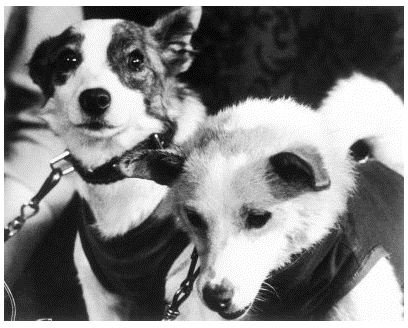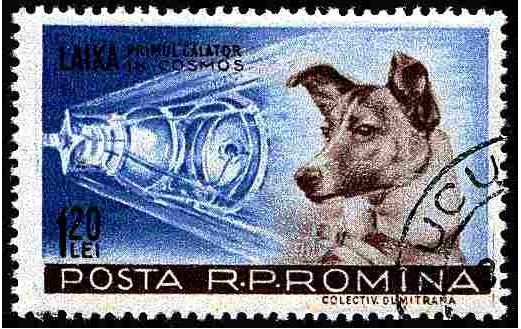A Few Facts about the Russian Space Dogs Including Laika, the Most Famous
Russian Space Dogs
Everyone knows details of the first man in space, but few remember another living creature which made invaluable contributions to the progress of space science. Here are a few facts about Russian space dogs, which were used for understanding the complexities involved in the space travel before the first human embarked on his historic flight.
A Few Facts About Russian Space Dogs
Why did Russian scientists choose dogs?
- Scientist believed that dogs could remain inactive for a prolonged period of time
- Females could urinate without disturbing their position
- Stray dogs were better acquainted with harsh conditions and hence could cope with space flights
Russia used female dogs for testing the viability of manned sub-orbital and orbital flights, Laika, the first living creature to make an orbital flight, became the most popular dog.

Facts about Laika’s journey
- Launching date: November 3, 1957
- Launch vehicle: Sputnik 2
- Launching station: Baikonur Cosmodrome
- Result: Due to the absence of a recovery plan Laika died in space. The spacecraft with its body re-entered the Earth’s atmosphere on the 14th of April 1958 and was destroyed.
- Breed type: Siberian Husky –mix
- Real name: Kudryavka
- Laika was a three year old stray dog found from the streets of Moscow
- She was nicknamed Muttnik by American press
- Her death remained a secret until a 2002 world Space Congress in which details of her painful death was revealed
- She was fitted with equipment to measure her blood pressure, heart beat and other body changes
- Within five to seven hours after the launching Laika died
- Scientists believe that the overheating inside the capsule, stress and fear caused her death
- The fate of Laika was doomed even before the journey began as the Russian’s didn’t plan for the capsule’s recovery**,** but the ship was equipped with enough food and oxygen to sustain life up to 10 days
Interesting Facts about Russian Space Dogs:

-
Same dogs were used more than once
-
Two dogs Smelaya and Bolik escaped from the experiment centre before their scheduled journey but Smelaya later returned and successfully made her flight
-
On July 22, 1951, Tsygan (Gypsy) and Dezik made their maiden sub-orbital flight and returned after reaching and altitude of 110km
-
On August 19, 1960, Belka and Strelka accompanied with mice and rats started their journey, remained in orbit for one day and successfully returned after 17 orbits around the Earth
-
Russia’s first 3D computer-animation movie Belka and Strelka: Star Dogs is named after this pair
-
Strelka had six puppies with Pushka, another dog who was trained to make space flight but never made one. One of Strelka’s puppies, Pushinka, was presented to the U.S President John F. Kennedy’s daughter Caroline Kennedy.
-
Damka and Krasavka became famous after their miraculous escape. Due to multiple machine failures, the rocket crashed after attaining a peak altitude of 214 km and the ejection seat failed to operate. After a one day long search, the capsule was found buried deep in the snow, but there was no sign of life. But, on the second day scientists returned to find barking dogs trapped inside the capsule.
-
Verterok and Ugolyok were the last pair who made it to space and made history by spending the longest time in space. On February 22, 1966, they started their flight in a Kosmos 110 spacecraft and remained in space for 22 days before safely returning.
Conclusion
Among all these dogs, Laika enjoys a special place in the minds of animal lovers all over the world, mainly because people think that Russians did injustice to Laika by putting the helpless animal on a space flight that was never meant to return. There are many unanswered questions regarding the last hours of Laika inside that ill-fated flight, and one can only hope that it wasn’t painful.
Sources:
https://www.silverdalen.se/stamps/dogs/library/library_space_dogs_russian.htm
https://news.bbc.co.uk/onthisday/hi/dates/stories/november/3/newsid_3191000/3191083.stm
